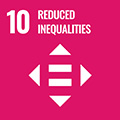- Docente: Alessandra Bonazzi
- Credits: 6
- SSD: M-GGR/01
- Language: Italian
- Teaching Mode: Traditional lectures
- Campus: Bologna
- Corso: First cycle degree programme (L) in Communication Sciences (cod. 8885)
-
from Apr 07, 2025 to May 14, 2025
Learning outcomes
The student, at the end of the course, has acquired a historical and critical understanding of the most relevant themes of the new cultural geography, with particular attention to concepts such as the construction of European identity, otherness, territory, colonialism, representation, and landscape.
Course contents
What is a border, where is it located, and how does it function? The course addresses these fundamental questions by offering the concept of “hostile environment” as a privileged analytical lens to grasp some of the most salient transformations of borders on a global scale. The term “hostile environment” describes two interconnected phenomena: on the one hand, all the policies and practices in recent years that have attempted to withdraw access to social protection for migrants, with the ultimate aim of excluding them from the Global North countries; on the other hand, it refers to how increasingly militarized border surveillance practices and technologies have forced thousands of people to cross ever more arduous and dangerous places (seas, rivers, mountain ranges, etc.) in search of international protection.
The course program is divided into two parts. The first part provides conceptual and analytical tools to (re-)think the concept of “hostile environment” and borders. Far from being reducible to discrete and easily identifiable lines and points, as they are often conceived and represented, contemporary border apparatuses increasingly operate as diffuse political atmospheres that permeate every space of (non-)sociality. In this sense, the concept of environment, understood not simply as what surrounds and is outside of us (environment), but rather as a dynamic socio-natural space, allows us to capture this pervasive nature of contemporary borders. The second part of the course will focus on certain contemporary border policies related to the construction/representation and racialization of subjects defined by border surveillance practices and the often lethal power of the borders themselves.
Readings/Bibliography
S. Mezzadra, Metamorfosi di un solco. Terra e confini, in «Parolechiave», 44 (2010), pp. 9-27.
C. Del Baggio, ‘Oplopoiesi del confine alpino. Come le politiche migratorie trasformano la montagna in uno spazio ostile e letale’. GEA paesaggi territori geografie, 2020, Geografia e migrazioni, 42, pp.10-17.
H. van Houtum, BEYOND ‘BORDERISM’: OVERCOMING
DISCRIMINATIVE B/ORDERING AND OTHERING, Journal of Economic and Human Geography, Vol. 112 (1), 2021, pp. 34-43.
H. van Houtum, A. van Uden, The birth of the paper prison. The global
inequality trap of visa borders, Politics and Space, 2021, pp. 20-27.
E. Schindel, Death by ‘nature’: The European border regime and the spatial production of slow violence, Politics and Space, 2022, Vol 40 (2), pp. 428-446.
E. Traverso, Gaza davanti alla storia, Bari-Roma, Laterza
C. Minca, A. Rijke, P. Pallister-Wilkins, M. Tazzioli, D. Vigneswaran, H. van Houtum A. van Uden, Rethinking the biopolitical:Borders, refugees,
mobilities. Politics and Space, 2022, Vol. 40(1) pp. 3–30
Dal saggio: E. Weizman, Spaziocidio. Israele e l'architettura come strumento di controllo, Mondadori, 2009: Introduzione. Architettura di frontiera, pp. 10-32.
Teaching methods
Lectures, presentations by attending students on specific topics with materials provided by the instructor.
Assessment methods
For attending students:
The final grade will be determined as follows:
- 40% : group presentation and class participation in discussions;
- 60% : written paper of 1000-1500 words based on a current event or on concepts and texts discussed in class.
For non-attending students:
The final grade will be determined by a written paper of 2500-3000 words, which will be discussed by the candidate during an oral exam, where knowledge of the bibliography texts will also be assessed.
Teaching tools
Slides, video, film
Students with disabilities or Specific Learning Disorders are entitled to special adjustments according to their condition, subject to assessment by the University Service for Students with Disabilities and SLD. Please do not contact teachers or Department staff, but make an appointment with the Service. The Service will then determine what adjustments are specifically appropriate, and get in touch with the teacher. For more information, please visit the page:
https://site.unibo.it/studenti-con-disabilita-e-dsa/en/for-students
Office hours
See the website of Alessandra Bonazzi
SDGs

This teaching activity contributes to the achievement of the Sustainable Development Goals of the UN 2030 Agenda.
